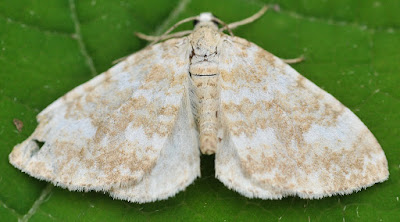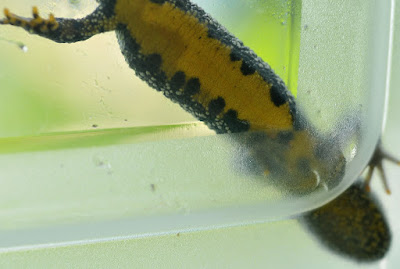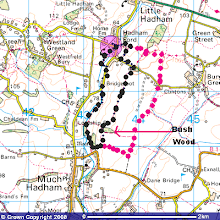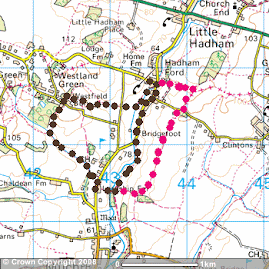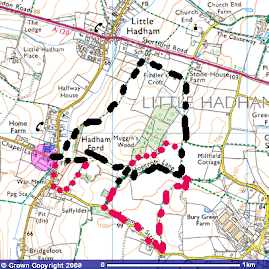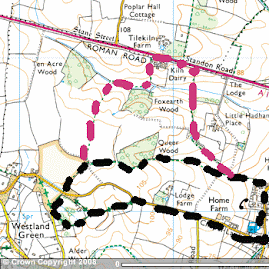Flew out from Stansted to Nimes on Monday morning, picking up a small hire car at the airport and heading to our hotel in Saintes Maries de la Mer for 4 nights, returning midday Friday.
On the journey to the hotel we stopped off to check the local rice fields, flooded in May and consequently, some having the correct depth of water to attract the waders.
Near St Gilles we recorded many glossy ibis, gull billed tern, a solitary lapwing, the first of numerous black kites along with black winged stilt, but no small waders.
After dropping off our packs at the hotel, Gary and I headed to the Parc Ornithologique at Pont du Gau. This is a place I have visited on many occasions and once past the lagoons of flamingoes and mallards there is a fine 4 mile trail where several hides and viewing screen have been placed. Again, not too many waders but we did score with greenshank and several spotted redshanks. Nightingales were everywhere as were swifts and swallows, a single sardinian warbler, several great reed warblers and little, common and whiskered terns, mainly on the exposed sandbank opposite the main hide. Bee eaters were noted along wires, a couple of sacred ibis were in with the little and cattle egrets and the numerous grey herons. Fan tailed warblers (zitting cisticolas) and cetti's warblers made the list.
We returned to the hotel before heading out for drinks and a meal. Overhead, the first of many pallid swifts made the list, totalling 45 for the afternoon, a good start.
 |
| Cattle egret |
 |
| Black winged stilt |
 |
| Greater flamingoes |
 |
| Flamingo portrait |
 |
| Nightingale |
 |
| distant greenshank |
 |
| even more distant spotted redshank |
 |
| Little egret |
 |
| Yellow legged gull |
Day 2 began with a wander east from the town, along The Digue footpath to visit a few smaller lakes and to give Gary an idea of the terrain. A turnstone on the beach was good and 2 melodious warblers in a bush at the same time as we watched yellow wagtails, ssp
iberiae. A serin was heard but not seen and several crested larks were noted on the dry stoney/sandy track. More terns and flamingoes and the ubiquitous black kites. We returned to the car and headed off to La Capeliere Reserve on the east shores of Etang de Vaccares. A wander around the trail here gave up red crested pochard, white wagtail, red kite, reed and sedge warbler and a great crested grebe. Following this we headed along narrow lanes to Etang du Fangassier where we encountered the expected slender billed gulls and more yellow wagtails. From here, a drive over to Le Sambuc where a marvellous red footed falcon posed on wires and shortly afterwards, an overhead short toed eagle, the first of at least 3 we recorded. A couple of black terns flew in front of the car as we drove along lanes north of Etang de Vaccares near Mas Argon. Here we also scored with Mediterranean gulls, a first for me in this region. A small beer at the bar in Albaron, L'Agachon before another evening of a few lagers and a good meal.
 |
| Turnstone from Les Digue footpath |
 |
| Red crested pochard at La Capeliere |
 |
| Yet to be identified |
 |
| Red footed falcon at Le Sambuc |
 |
| same bird |
 |
| Gull billed tern |
 |
| Short toed eagle at some distance |
 |
| Overhead short toed eagle |
 |
| Slender billed gulls at Etang de Fangassier |
 |
| Glossy ibis on the Mas Argon road |
 |
| Mediterranean gulls at Mas Argon |
Day three and a drive of an hour or so up to Les Baux de Provence where we hoped to see some birds more associated with the mountains as we were in Les Alpilles. We arrived before the many tourists to this stunning medieval village, paid our money to gain access to the chateau perched on the peak and began searching for alpine accentors. As we thought, a little too late in the year and they had probably moved higher up to breed. However, numerous black redstarts and serins kept us happy and whilst checking the crag martins that flew rapidly over our head we noted a couple of larger swifts, flying at amazing speeds, showing white underparts. Alpine swift, a great bird to see. A wheezing greenfinch got on to the list as did 2 redstarts.
We then headed off to St Martin le Crau where the four main target birds were little bustard, stone curlew, roller and pin tailed sandgrouse. We failed to see any of these in a habitat that looked perfect for all species. We noted plenty of butterfly species, particularly small heath and what is provisionally thought to be Provencal Blue. After an hour of searching and hearing many great reed warblers and nightingales, we headed off south where we got lucky with numerous bee eaters and a pair of stunning rollers. The latter failed to reappear for a proper photo, so the following flyby shot is all I managed. The bee eaters posed well, though. In all, we had added another 15 species to the list, taking the total to a pleasing 86 species.
 |
| Serin at Les Baux |
 |
| Black redstart |
 |
| Spectacular view |
 |
| Les Baux village |
 |
| One of many black kites |
 |
| Superbly posing serin |
 |
| Provencal Blue perhaps? |
 |
| Small heath |
 |
| Bee eater |
 |
| Distant flyby roller |
 |
| Another bee eating bee eater |
Day 4 and we awoke to wet and very windy conditions. We set off for Le Paty de la Trinitie for a walk along a path I have used many times before, but the mud was deep and the wind meant no sensible bird was going to be showing, so off in the car, firstly for another coffee at L'Agachon and then a drive around fields in the area known as the Petite Camargue. The rice fields here were too full of water but a large pipit type bird was sitting in front of me on the road. At first, I thought Richard's pipit but having checked books, this was clearly a Calandra lark, a new bird for the trip.
We returned to the hotel to await better conditions and consequently, set off in the late afternoon to drive around again. In the Etang to the west of Saintes Maries de la Mer, a few waders were spotted in one corner: redshank, spotted redshank, ruff and several curlew sandpiper. This was the best bit of wader watching for the whole trip. Later, a marsh harrier rose majestically over reedbeds.
 |
| Black winged stilt on eggs |
 |
| More black winged stilt |
And so, Friday and our final few hours before we had to return the car around 10am for a 12.35 flight home. We set off around lanes we had visited on the Monday, but the rain had increased the depth of water in the rice fields, so little noted apart from glossy ibis and gull billed terns. We then parked the car near the airport to spend time checking a scrubby heath area near the runway. Gary noted cirl bunting and 3 turtle doves were seen along with singing whitethroats, nightingales and a few more black redstarts.
We returned the car, full of petrol and relatively clean so didn't incur extra rip off charges (60 euros if the car was deemed too dirty!!) and the flight was on time, returning us to Stansted by 1.30pm
All in all an excellent 4 days birding, with a few lifers for Gary and several new birds for my Camargue list: red footed falcon, Mediterranean gull, crag martin, cuckoo and pied flycatcher.
In total, we saw 94 species of birds, with nightingale, glossy ibis, gull billed tern, black redstart and black kite being numerous along with good numbers (100's) of greater flamingo and black winged stilt. I am now planning a return visit sometime next year, perhpas in winter to find new birds of prey such as Spotted eagle that are known to overwinter in this fantastic habitat.















